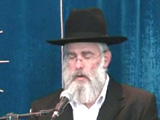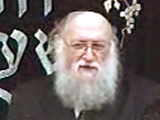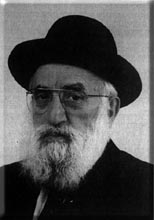Beit Midrash
- Sections
- Chemdat Yamim
- Igrot Hare’aya
Recipient: Rabbi Yehuda Leib Felman, an uncle of Rav Kook
Body: [Last week we saw Rav Kook’s disappointment over tensions among kollelim and the beginning of his thesis that Yerushalayim’s historic/spiritual centrality should find expression even in regard to practical matters of financial support.]

Igrot Hare’aya (200)
Beit Din Eretz Hemda - Gazit
32 - Yerushalayim First and Foremost
33 - Yerushalayim First and Foremost part II
34 - Yerushalayim First and Foremost - part III
Load More
One should not think that the early righteous people could have settled in Yerushalayim and preferred another city in Eretz Yisrael. We see these days, as well, that all of the Torah scholars and righteous people desire to settle in Yerushalayim specifically. Many travel to visit it and pray on special days at the Western Wall (may it be built quickly in our days) with sanctity and incredible inspiration. Rather, the yoke of exile has been very heavy in Yerushalayim because of the traditional hatred of the non-Jews.
Only now, in ikva d’meshicha (the stage preceding the coming of Mashiach) do we see good omens – Hashem is treating us in a manner of salvation and mercy. Thank G-d, some of our Jewish brethren are distinguished in the eyes of the officials, in the Holy Land in general and Yerushalayim specifically. Thank G-d, things are now safe, and there is no fear.
One should not ask about the greatest righteous people – why did some choose to live in other holy cities, even when they could have lived in Yerushalayim? Certainly every location in Eretz Yisrael has its own individual root and element of sanctity, as is discussed at length in Chessed L’Avraham.
Even on a simple level, every place has its own special holy appeal. For example, my location of Yafo is special in that it is on the border specified in the Torah ("the border of the sea" – Bamidbar 34:6), and it is the place the prophet Yonah came to, which certainly embedded in it special spiritual characteristics that have remained over the generations. It is also the place where the rafts made of cedar wood were brought to land to be used in building the Beit Hamikdash (see Divrei Hayamim II, 2:15). According to the Yerushalmi, a miracle happened to Nikanor in its port.
Therefore, although Yerushalayim is very beloved, it has the most all-encompassing sanctity, and there is a precedence to live there, still whoever felt in the root of his unique soul a connection to a certain city’s special individual sanctity would decide to live there.
The Land was divided among tribes, and therefore there were prophets from different tribes and locations. Although most were in Yerushalayim, which is why it was called the "valley of visions" (Yeshayahu 22:1) and when a prophet’s city is not mentioned he can be assumed to be from there (Petichta 24), a minority lived in other places. These are specific matters, but generally there is certainly a greater mitzva to live in Yerushalayim than anywhere else, despite the beloved nature of every place. To this day, elders who have lived in Eretz Yisrael and try every day to travel in new paths within it because of their great love for the Land, still try their best to live in Yerushalayim. It is just that many are forced by their situation or their finances to live elsewhere.

Excitement over a Friend’s New Newspaper – #319
Date and Place: 4 Menachem Av 5670 (1910), Rechovot
Beit Din Eretz Hemda - Gazit | Iyar 5785

Refuting Criticism by the Ridbaz – #311 – part III
Date and Place: 19 Sivan 5670 (1910), Yafo
Beit Din Eretz Hemda - Gazit | Nisan 5785

Excerpts of Letter on Shemitta – #289 – part I
Date and Place: 6 Nisan 5670 (1910), Yafo
Beit Din Eretz Hemda - Gazit | Tevet 5785

Excerpts of Letter on Shemitta – #289 – part II
Date and Place: 6 Nisan 5670 (1910), Yafo
Beit Din Eretz Hemda - Gazit | Tevet 5785

Beit Din Eretz Hemda - Gazit

A Commercial Rental for a Closed Business – part II
based on ruling 80047 of the Eretz Hemdah-Gazit Rabbinical Courts
Shvat 1 5782

Trying to Arrange Purchase of Land in Eretz Yisrael
#222 Date and Place: 2 Elul 5669 (1909), Rechovot
18 Sivan 5784

Limits of Interest Rate for Loan with Heter Iska – part I
based on ruling 80033 of the Eretz Hemdah-Gazit Rabbinical Courts
Sivan 8 5782























